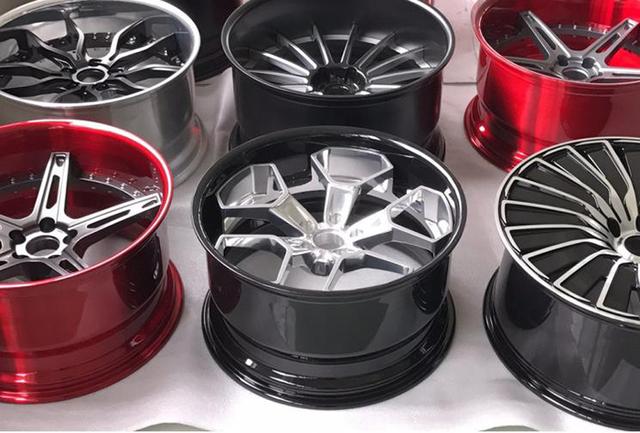Forged Wheel Processing Workflow
Forged wheels are widely used in heavy-duty applications such as metallurgical cranes, quenching cranes, etc., where the load is high, and the working conditions are demanding. Forged wheels are produced by using forging presses to deform metal billets elastically, giving them certain mechanical properties and shapes.
During the forging process, forged wheels eliminate defects like porosity that may occur during the metal refining process, optimize the microstructure, and maintain a continuous metal flow.
Therefore, forged wheels exhibit significantly better mechanical properties compared to cast wheels made of similar materials.
 Forged Wheel Processing Workflow
Forged Wheel Processing Workflow
- Πρώτες ύλες
Select suitable steel materials according to customer requirements and conduct chemical composition inspections to ensure material quality. - Steel Cutting
Cut steel ingots or billets into appropriate sizes and weights according to product specifications for subsequent forging. - Heating and Annealing
Heat the cut billets according to the product process to ensure the heating temperature meets the process requirements. - Forging
Move the heated billets to the forging machine and perform various forging processes such as upsetting and elongation based on the size of the raw materials and the forging ratio. Monitor the dimensions of the forgings in real-time and control the forging temperature using an infrared thermometer. - Forging Inspection
Perform initial inspections on the forged blanks, primarily checking for conformity to appearance and dimensional standards. Inspect for defects like cracks in the appearance and ensure that the dimensions of the blanks are within the required tolerances, keeping proper records. - Post-forging Heat Treatment
Refine grain size, achieve uniform microstructure and release internal stresses through annealing, which reduces hardness to facilitate subsequent machining and improves the material’s structure and mechanical properties. Prepare the structure for subsequent quenching. - Rough Machining
Process the forged blanks according to product requirements, leaving allowances for subsequent precision machining. - Θερμική επεξεργασία
Heat the forgings to predetermined temperatures, hold for a specified time, and then cool at a controlled rate to improve the internal structure and properties of the forgings. The purpose is to relieve internal stresses, prevent deformation during mechanical processing, and adjust hardness for better machinability. Perform air cooling, water quenching, oil quenching, or other heat treatments based on material requirements, including normalizing, tempering, and quenching.
γιατί οι σφυρήλατες ζάντες είναι τόσο ακριβές (11)
- Precision Machining
Use CNC machine tools to precision machine the post-forging heat-treated forged wheel blanks, ensuring that the dimensional accuracy, surface finish, and other requirements of the forgings meet the drawing specifications. - Forged Wheel Visual Inspection
Inspect the appearance of the forged wheels to ensure they conform to the dimensional specifications on the customer’s drawing. Perform tests such as ultrasonic testing (UT), magnetic particle testing (MT), hardness testing, tolerance inspection, carburizing, and other requirements specified in the drawings. - Mechanical Performance Testing
To meet customer requirements, conduct mechanical performance testing on the forgings, including yield strength, tensile strength, impact resistance, metallography, and other tests. Fulfill the testing needs of forged wheel quality control. - Surface Treatment and Packaging
After passing visual inspection and mechanical performance testing, which confirms the product quality of the forged wheels, perform finishing work such as anti-rust coating and painting according to customer requirements. Pack the wheels for storage and shipment.
